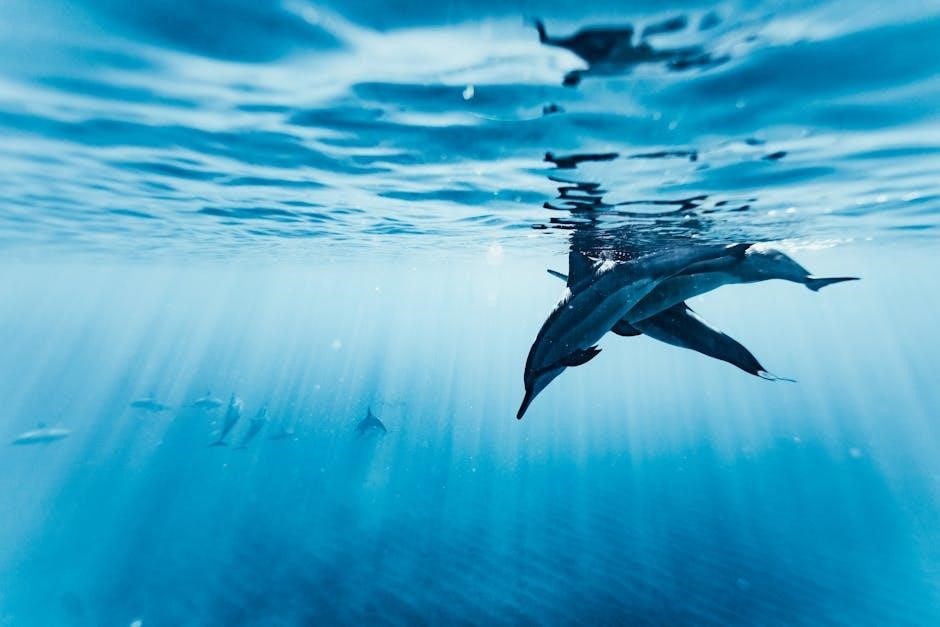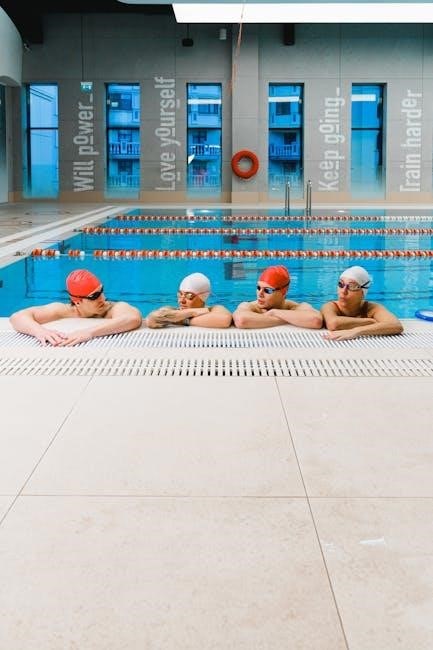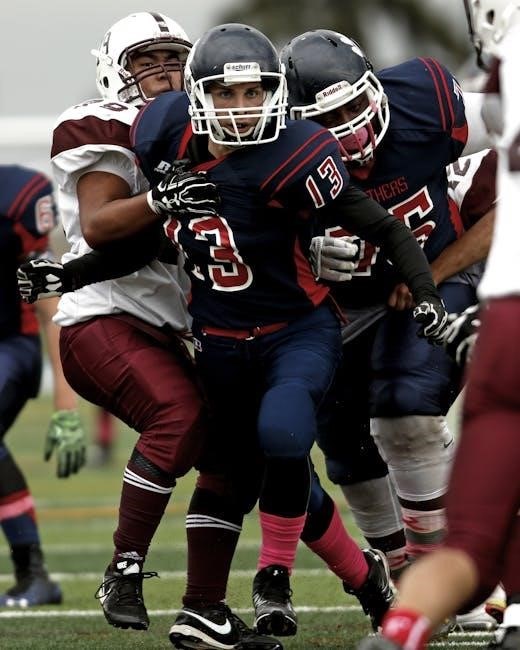Age group swim workouts are structured programs designed to cater to swimmers of different ages, focusing on technique, endurance, and strength development. These workouts ensure swimmers progress safely and effectively, with tailored exercises for varying skill levels and goals. They emphasize water safety, skill mastery, and physical fitness, making them essential for both recreational and competitive swimmers. By incorporating drills, sets, and intervals, these workouts help build confidence and proficiency in the water, fostering a lifelong love for swimming.
Such programs are particularly beneficial for young children, promoting water comfort and safety, while older groups focus on advanced techniques and competitive skills. Coaches and parents play a vital role in supporting swimmers, ensuring a positive and productive learning environment. With proper planning and supervision, age group swim workouts lay the foundation for long-term success and enjoyment in swimming.
Importance of Structured Swimming Programs for Different Age Groups
Importance of Structured Swimming Programs for Different Age Groups
Structured swimming programs are essential for addressing the unique needs of swimmers across various age groups. These programs ensure safety, skill progression, and physical development, catering to the abilities and goals of each group. For young children, they focus on water comfort and basic skills, while older groups emphasize technique refinement and endurance. Coaches play a crucial role in tailoring workouts to meet the specific demands of each age category, ensuring a balanced approach to technique, strength, and stamina. Such programs foster confidence, discipline, and a lifelong appreciation for swimming, making them vital for both recreational and competitive swimmers.
Overview of the Benefits of Age-Specific Training
Overview of the Benefits of Age-Specific Training
- Age-specific training tailors workouts to meet the unique needs of each age group, enhancing skill development and physical fitness.
- It ensures swimmers progress at an appropriate pace, reducing the risk of injury and burnout while fostering confidence and enjoyment.
- For younger swimmers, it focuses on water safety, basic techniques, and fun activities to build a strong foundation.
- For older swimmers, it emphasizes advanced techniques, endurance, and competitive skills, preparing them for higher levels of swimming.
- Structured programs promote inclusivity, allowing swimmers of all ages to participate and benefit, regardless of their skill level or goals.
- Coaches and lifeguards play a key role in ensuring safe and effective training environments, making age-specific programs a cornerstone of successful swimming development.

Understanding Age Categories in Swimming
Age categories in swimming group athletes by age, ensuring workouts match their developmental needs. This approach enhances safety, skill development, and physical fitness while fostering competitiveness. Coaches use these groupings to tailor training effectively.
Definition of Age Groups in Competitive Swimming
Definition of Age Groups in Competitive Swimming
In competitive swimming, age groups categorize swimmers based on their birth year, typically dividing them into predefined brackets. These groups ensure fair competition and appropriate training levels. Common age categories include 8 and under, 9-10, 11-12, 13-14, 15-16, and 17-18 years old. Each group participates in events tailored to their age, skill level, and physical development. This system allows for balanced competition, fostering growth and sportsmanship among athletes. Age groups help coaches design workouts that align with the developmental needs of each swimmer, ensuring a safe and effective progression in their training.
How Age Categories Impact TrainingIntensity and Volume

How Age Categories Impact TrainingIntensity and Volume
Age categories significantly influence the intensity and volume of swim workouts, as younger swimmers require less intense training to avoid overexertion. For example, 8-and-under groups focus on water safety and basic techniques, with shorter, more engaging sessions. As swimmers age, workouts gradually increase in intensity, incorporating more advanced drills and endurance exercises. Teenage groups, for instance, can handle higher volumes and more challenging sets, preparing them for competitive demands. Coaches tailor the number of repetitions, intervals, and rest periods based on age, ensuring workouts are developmentally appropriate and effective.

Designing Effective Swim Workouts for Age Groups
Effective swim workouts for age groups involve structured drills, skill-focused sets, and timed intervals, ensuring a balance between technique, endurance, and strength development for optimal performance.
Key Principles of Workout Design for Young Swimmers
Key Principles of Workout Design for Young Swimmers
Designing workouts for young swimmers requires a focus on age-appropriate exercises, water safety, and skill progression. Techniques should prioritize proper form over speed, ensuring a strong foundation. Drills and games that promote engagement and fun are essential, while incorporating rest intervals to prevent fatigue. Supervision and feedback are critical to correct mistakes early. Workouts should also include activities that enhance coordination and stamina, tailored to the developmental stage of each swimmer. Balancing skill development with enjoyment fosters a lifelong love for swimming and prepares young athletes for future challenges in the sport.
Incorporating Drills, Sets, and Intervals for Skill Development
Incorporating Drills, Sets, and Intervals for Skill Development
In age group swim workouts, drills, sets, and intervals are essential for skill development. Drills focus on technique refinement, breaking down strokes into manageable parts. Sets provide repetition to build endurance and consistency, while intervals introduce timed challenges to enhance speed and race readiness. These components ensure swimmers progress systematically, mastering foundational skills before advancing. By tailoring drills to age-specific needs and incorporating varied intervals, coaches can create engaging and effective sessions that foster improvement and confidence in the water. This structured approach helps swimmers achieve both technical proficiency and physical conditioning.
Balancing Technique, Endurance, and Strength in Workouts
Balancing technique, endurance, and strength is crucial in age group swim workouts to ensure comprehensive development. Technique-focused drills enhance efficiency and prevent injuries, while endurance training builds cardiovascular fitness and stamina. Strength exercises, such as dryland workouts or resistance drills, improve power and speed. Coaches design workouts to integrate these elements progressively, ensuring swimmers master skills at each stage. This balanced approach fosters overall athleticism, preparing swimmers for both short-term goals and long-term success in the sport. By prioritizing technique, endurance, and strength, workouts become holistic, addressing the diverse needs of swimmers across all age groups.
Benefits of Age Group Swim Workouts

Age group swim workouts enhance water safety, build competitive skills, and promote physical activity. They foster a healthy lifestyle, improve technique, and boost overall fitness for all ages.
Enhancing Water Safety and Comfort for Young Children
Enhancing Water Safety and Comfort for Young Children
Age group swim workouts prioritize water safety and comfort for young children, teaching essential skills like floating, breathing, and basic strokes. These programs introduce kids to aquatic environments, reducing fears and building confidence. Structured activities, such as games and drills, keep young swimmers engaged while promoting skill development. The use of flotation devices and supportive instructors ensures a safe learning process. By focusing on water comfort, these workouts lay the foundation for lifelong swimming abilities and a positive relationship with water. They also prepare children for more advanced training as they grow older.
Building Competitive Skills in Older Age Groups

Building Competitive Skills in Older Age Groups
For older age groups, swim workouts focus on refining techniques, enhancing endurance, and building strength to prepare for competitions. Coaches emphasize interval training, high-intensity drills, and structured sets to improve speed and stamina. These workouts also incorporate race strategies and mental preparation to foster resilience and focus. Swimmers in this category benefit from personalized feedback and tailored training plans to address specific weaknesses and maximize performance. The goal is to develop well-rounded athletes capable of excelling in competitive environments while maintaining a love for the sport and a commitment to continuous improvement.
Promoting Physical Activity and Healthy Lifestyles
Promoting Physical Activity and Healthy Lifestyles
Age group swim workouts play a crucial role in promoting physical activity and fostering healthy lifestyles across all age groups. Swimming is a low-impact, full-body exercise that improves cardiovascular health, muscular endurance, and flexibility. Regular participation in structured swim programs helps combat sedentary behaviors and encourages lifelong physical activity. These workouts also contribute to mental well-being by reducing stress and boosting self-esteem. By engaging in swimming, individuals develop healthy habits that extend beyond the pool, setting a foundation for active lifestyles and overall wellness. This makes swimming an ideal activity for families and communities to adopt together.

Swim Workout Planning for Different Age Ranges
Swim workout planning for different age ranges focuses on age-specific needs, ensuring progressive skill development and balanced technique, endurance, and strength. Workouts support overall development and prepare swimmers for advanced training.
Workouts for Preschool-Aged Children (4-5 Years)
Workouts for Preschool-Aged Children (4-5 Years)
Workouts for preschool-aged children focus on water safety, comfort, and basic movement skills. Activities include floating, kicking, and arm movements, introduced through play to build confidence. Games and interactive drills are used to engage young swimmers, fostering a positive association with water. Supervised sessions emphasize breath control and recovery techniques, laying the groundwork for stroke development. Structured yet fun exercises help improve coordination and balance, preparing children for more advanced skills as they progress. These early workouts are crucial for developing foundational swimming abilities and a lifelong enjoyment of aquatic activities.
Developing Skills in School-Aged Swimmers (6-12 Years)
For school-aged swimmers (6-12 years), workouts focus on refining strokes, enhancing endurance, and building competitive skills. Drills, sets, and intervals are tailored to improve technique and stamina. Coaches emphasize proper form and efficiency, while incorporating fun activities to maintain engagement. Structured sessions balance technique work with endurance training, preparing swimmers for more advanced challenges. Parents and coaches play a crucial role in providing support and feedback, ensuring each child progresses at their own pace. These workouts not only develop physical skills but also foster teamwork, discipline, and a lifelong love for swimming.
Advanced Training for Teenage and Adolescent Swimmers
Advanced training for teenage and adolescent swimmers focuses on refining techniques, increasing intensity, and preparing for competitive events. Workouts emphasize stroke mastery, speed, and endurance through specialized drills and interval training. Strength and conditioning exercises are integrated to enhance power and efficiency in the water. Coaches also prioritize mental preparation, teaching strategies for race tactics and stress management. Feedback from swim apps and video analysis aids in performance improvement. This phase balances physical and mental development, equipping swimmers with the skills and confidence needed for high-level competition while fostering a lifelong commitment to aquatic excellence and healthy lifestyles.

Swimming Safety and Supervision
Ensuring safe swimming environments is crucial for all age groups. Lifeguards and coaches must be vigilant, implementing emergency plans and constant supervision to prevent accidents and injuries.
Proper supervision ensures swimmers of all skill levels can train and enjoy the water safely, fostering confidence and a positive experience in aquatic activities.
Ensuring Safe Swimming Environments for All Age Groups
Creating a safe swimming environment requires careful planning and supervision. For young children, this includes maintaining a low swimmer-to-instructor ratio and using flotation devices if necessary. Older swimmers benefit from clear communication of workout plans and emergency procedures. Proper pool maintenance, such as ensuring appropriate water temperature and chemical levels, is essential for all age groups. Lifeguards should be certified and actively monitoring the area at all times. Coaches should also be trained in first aid and CPR to handle any potential incidents promptly.
Regular safety drills and education on water safety can further minimize risks, ensuring that all participants feel secure and confident in their swimming environment. This proactive approach helps prevent accidents and fosters a positive experience for swimmers of all ages.
The Role of Lifeguards and Coaches in Preventing Accidents
Lifeguards and coaches play a crucial role in maintaining safety during swim workouts. Lifeguards must remain vigilant, scanning the pool area constantly to respond quickly to emergencies. Coaches should design workouts with safety in mind, ensuring swimmers are grouped by ability and skill level. They must also demonstrate techniques clearly and provide proper supervision. Both lifeguards and coaches should be trained in first aid and CPR to handle incidents effectively. Their combined efforts create a secure environment, allowing swimmers to focus on skill development and enjoyment.
Regular safety briefings and emergency drills further enhance their ability to prevent and manage accidents, ensuring a safe experience for all participants.
Technology and Tools for Swim Workouts
Technology enhances swim workouts through innovative tools. Swim apps like Polar Flow provide real-time tracking and feedback, while USA Swimming forms assist in organizing and selecting athletes efficiently.
Using Swim Apps for Tracking Progress and Feedback
Using Swim Apps for Tracking Progress and Feedback
Swim apps like Polar Flow offer real-time tracking of workouts, providing detailed feedback on performance. These tools allow swimmers to monitor progress, set goals, and analyze data post-training. Coaches and athletes can sync devices to review metrics such as stroke efficiency, speed, and endurance. Apps also enable goal-setting, helping swimmers stay motivated and focused. Real-time feedback aids in technique improvement, while historical data helps track long-term development. Accessible on mobile devices, these apps are user-friendly and essential for optimizing swim workouts. They empower swimmers to make data-driven decisions, enhancing overall performance and enjoyment of the sport.
Implementing USA Swimming Forms for Athlete Selection
Implementing USA Swimming Forms for Athlete Selection
The USA Swimming forms are essential tools for selecting athletes, ensuring a fair and transparent process. Coaches use these forms to evaluate swimmers based on performance metrics, such as times and rankings. The system calculates necessary fees and streamlines administrative tasks, making it easier to manage memberships and meet entries. These forms also help identify areas for improvement and set goals. By integrating with data from swim apps, they provide a comprehensive view of performance, aiding in tailored training plans. This structured approach supports athlete development and maintains consistency across teams.
Best Practices for Coaches and Parents
Effective communication and collaboration between coaches and parents are crucial for swimmers’ success. Setting clear goals, providing constructive feedback, and fostering a supportive environment ensure optimal development and engagement.
Communication Strategies for Effective Team Management
Communication Strategies for Effective Team Management
Clear and consistent communication is vital for managing swim teams effectively. Coaches should maintain regular dialogue with swimmers and parents, providing updates on progress, goals, and expectations. Active listening and transparency help build trust and understanding. Utilizing digital tools, such as swim apps, can streamline communication and ensure everyone stays informed. Additionally, fostering open feedback loops allows swimmers and parents to voice concerns and ideas, promoting a collaborative environment. By prioritizing communication, coaches can create a supportive and productive team culture that fosters growth and success in the water.
Providing Support and Guidance for Swimmers of All Ages

Providing Support and Guidance for Swimmers of All Ages
Providing support and guidance is essential for swimmers of all ages to thrive in their training. Coaches and parents should work collaboratively to create a nurturing environment that fosters skill development and confidence. Regular feedback, goal-setting, and positive reinforcement are key tools to help swimmers progress. Utilizing resources like USA Swimming forms and mobile apps can enhance tracking and communication, ensuring personalized attention. Encouraging a growth mindset and celebrating small achievements motivates swimmers to push their limits. By tailoring support to individual needs, coaches and parents can help swimmers achieve their full potential while enjoying the sport.
Overcoming Barriers to Swimming Participation
Addressing inequalities in access to swimming facilities and promoting participation across diverse age groups are crucial for fostering inclusivity. Encouraging all individuals to engage in swimming ensures equal opportunities for physical activity and skill development, regardless of background or age, ultimately fostering a more inclusive and active community.
Addressing Inequalities in Access to Swimming Facilities
Addressing Inequalities in Access to Swimming Facilities
Embedding swimming classes in schools and ensuring affordable access to facilities are key strategies to reduce inequalities. Socioeconomic disparities often limit access, particularly for young children. Programs that subsidize lessons and provide transportation can bridge gaps. Partnerships with community centers and public pools help make swimming more inclusive. Prioritizing underserved populations ensures equitable opportunities for skill development and physical activity. These efforts foster a culture of inclusion, enabling all age groups to benefit from swimming’s health and safety advantages. Equal access promotes lifelong participation and reduces disparities in water safety and competitive skills.
Encouraging Participation Across Diverse Age Groups
Encouraging participation in swimming across diverse age groups requires tailored approaches to meet the unique needs and interests of each group. For young children, fun and engaging water activities can foster a love for swimming. School-aged swimmers benefit from structured skill development programs, while teenagers and adults may be motivated by fitness and competitive goals. Inclusive community initiatives, such as discounted memberships or free trials, can attract a wider demographic. Parents and coaches play a key role in promoting swimming as a lifelong activity, emphasizing its health benefits and social opportunities. Such efforts ensure that swimming remains accessible and appealing to all ages, fostering a culture of participation and enjoyment.

Resources for Swim Workouts
Discover comprehensive PDF guides, USA Swimming forms, and websites offering free workout plans. Utilize apps like Polar Flow for tracking progress and detailed feedback post-training.
Recommended PDF Guides and Manuals for Coaches
Recommended PDF Guides and Manuals for Coaches
Coaches can benefit from comprehensive PDF guides like the Swimming and Lifesaving manual, which covers water safety, swimming, and rescue skills. The USA Swimming Form helps in athlete selection and fee calculation. Additionally, manuals such as the C1 Advanced handbook provide exam formats, task advice, and sample papers. These resources offer structured approaches to training, ensuring swimmers progress effectively. They also include practical tools for tracking workouts, such as the Polar Flow app, which provides instant feedback. These guides are essential for designing safe, engaging, and skill-focused programs for swimmers of all ages and skill levels.
Websites Offering Free Swim Workout Plans and Articles
Websites like Swimming and Lifesaving manual and USA Swimming offer free resources for coaches and swimmers. These platforms provide detailed workout plans, technique articles, and training guides tailored for different age groups. Many sites allow filtering workouts by distance, level, and stroke, making them versatile tools for coaches. Additionally, apps like the Polar Flow app offer tracking features and instant feedback, enhancing training efficiency. These resources are invaluable for designing structured, engaging, and skill-focused programs, ensuring swimmers of all ages and skill levels can progress effectively and safely.
Age group swim workouts play a pivotal role in fostering long-term development, ensuring swimmers build skills, confidence, and a lifelong passion for swimming through structured, age-appropriate training.
The Impact of Age Group Swim Workouts on Long-Term Development
Age group swim workouts significantly influence long-term development by fostering progressive skill mastery, physical fitness, and mental resilience. These structured programs ensure swimmers build a strong foundation, adapting techniques as they grow. Early focus on water safety and basic strokes in young children evolves into advanced training for competitive skills in older groups. Consistent participation enhances endurance, strength, and coordination, while also nurturing a love for swimming. Such comprehensive development not only prepares athletes for competitions but also promotes a healthy, active lifestyle, benefiting individuals well beyond their swimming careers.
Final Thoughts on Creating a Successful Swimming Program
Creating a successful swimming program requires a balanced approach, blending structured workouts with personalized attention to each swimmer’s needs. Coaches should prioritize skill progression, safety, and fun, ensuring swimmers of all ages feel challenged and supported. Leveraging technology, such as swim apps and tracking tools, can enhance progress monitoring and engagement. Strong communication between coaches, swimmers, and parents fosters a collaborative environment, essential for maximizing potential. By addressing barriers like accessibility and promoting inclusivity, programs can ensure diverse participation. Ultimately, a well-designed program not only develops skilled swimmers but also instills a lifelong appreciation for the sport and its benefits.




Be the first to reply